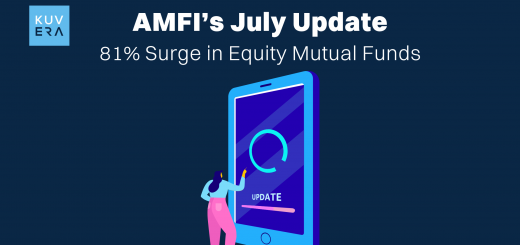Priya, a 43-year-old working professional, is sitting down with her financial advisor to plan her investments. She has two goals in mind: saving for her daughter’s school admission in one year and purchasing a family car in three years. While Priya has been diligently investing in equity mutual funds, she is concerned about market volatility affecting her short-term financial needs.
These are the traits her financial advisor observes in her:
- Risk-averse: Prefers stable investments over the volatility of equity funds.
- Portfolio diversification: Aims to balance her equity holdings with debt instruments.
Her advisor suggests a balanced approach: aligning each goal with an investment strategy tailored to the timeline and risk involved. For her daughter’s school admission in one year, he recommends a Short Duration Fund, ensuring capital stability. For purchasing a car in three years, he suggests a Medium Duration Fund, offering moderate mutual fund return while keeping risk within acceptable limits.
This story highlights the importance of goal-based planning, choosing investments that align with specific financial milestones. Whether you’re saving for a major expense, a long-term commitment, or seeking stability in your portfolio, debt mutual funds provide consistent returns while minimising risk. This article explores how to find the most suitable debt-based mutual fund for your financial goals.
Debt Mutual Funds Explained
Debt mutual fund returns are generally more stable compared to equity funds, making them ideal for conservative investors. They allocate money into bonds and money market securities such as government bonds, corporate bonds, and treasury bills. While they might not make headlines like their equity counterparts, they offer something equally valuable: stability and consistent mutual fund return.
Mutual funds India regulations, governed by SEBI, ensure that investors have access to transparent and well-regulated financial products for wealth creation. While their daily Net Asset Value (NAV) may fluctuate, these movements are generally smoother compared to the volatility of equity markets. For investors who seek capital protection over high mutual fund return, debt funds offer a less stressful investment experience.
Benefits of Debt Mutual Funds
Debt mutual funds offer several advantages:
- Stability – Less volatile than equity funds, making them safer investment options.
- Liquidity – Provide quick access to funds without significant penalties.
- Diversification – Access to a broad range of debt instruments, reducing overall risk.
Aligning Goals Based on Tenure
Once you have determined your financial timeline, the next step is identifying the type of debt fund that best aligns with your goals. When selecting a fund, it is crucial to compare mutual fund returns across different categories to ensure they align with your financial goals.
1. Short-term goals (1-3 years)
For immediate needs like school fees, or emergency savings, Short Duration Funds offer low risk with reasonable mutual fund return.
2. Medium-term goals (3-5 years)
For commitments like a home renovation or a child’s higher education fund, Medium Duration Funds strike a balance between risk and return.
Types of Debt Funds
Investors often seek mutual fund returns that outperform traditional savings accounts and fixed deposits. Debt-based mutual funds India offer an attractive alternative, providing liquidity and catering to different investor needs and investment horizons:

- Liquid Funds – Ideal for very short-term parking of funds (less than one year).
- Ultra Short Duration Funds – Slightly higher returns than liquid funds, suitable for up to six months.
- Short Duration Funds – Balances risk and return for investments between one and three years.
- Medium Duration Funds – Offers moderate returns for investments between three and five years with some interest rate risk.
- Long Duration Funds – Suitable for investors with a time horizon of over five years.
- Dynamic Bond Funds – Actively manage bond duration based on market conditions for flexible returns.
- Credit Risk Funds – Target higher returns by investing in lower-rated bonds but carry greater credit risk.
Choosing the Right Debt Fund
Investing in mutual funds India requires careful consideration of factors such as risk appetite, investment horizon, and fund performance. When selecting a debt fund, evaluating key metrics ensures it aligns with your goals and risk tolerance. Short-term debt funds may offer lower volatility, but their mutual fund returns tend to be lower than longer-duration funds.
1. Goal Alignment and Research
- Choose categories based on your financial timeline.
- Check the fund manager’s track record and expertise.
2. Risk Factors to Consider
(a) Interest Rate Risk
Interest rate risk happens when market interest rates change, affecting bond prices. When rates rise, new bonds offer better returns, making older ones less valuable. When rates fall, existing bonds with higher returns become more attractive, increasing their value. This impacts the Net Asset Value (NAV) of debt mutual funds.
(b) Credit Risk
Credit risk is the chance that a company fails to repay the money borrowed through bonds. Agencies like CRISIL rate bonds based on safety, from AAA (very safe) to BBB (risky). If a company defaults, the mutual fund’s value may drop.
(c) Liquidity Risk
Liquidity risk occurs when a mutual fund can’t sell its bonds easily due to low demand. If forced to sell at a lower price, the fund’s value drops, reducing investor returns.
3. Key Fund Metrics
(a) Total Expense Ratio (TER)
Lower TER means more of your returns stay with you. Compare TER across similar funds to find cost-effective options.
(b) Yield to Maturity (YTM)
YTM indicates the debt mutual fund return you can expect if the fund is held to maturity. Ensure higher YTM aligns with acceptable risk levels.
(c) Average Maturity
Funds with shorter average maturities carry lower risk but offer modest returns. Longer maturities may offer higher returns but are sensitive to interest rate fluctuations.
(d) Fund Allocation
Diversification reduces risk. Avoid funds overly concentrated in high-risk securities like corporate bonds unless you’re comfortable with the added credit risk.
Tax Implications
Understanding the taxation rules for debt mutual funds India can help investors make smarter decisions when planning their investments. As of April 1, 2023, all capital gains from debt mutual funds are taxed at the investor’s income tax slab rate, regardless of the holding period.
SIPs in Debt Mutual Funds
Systematic Investment Plans (SIPs) are not just for equity funds. Consistent investments through SIPs can help smooth out market fluctuations and improve mutual fund returns over the long run. SIPs are particularly useful for:
- Short-term goals (1-3 years) via Short Duration Funds.
- Medium-term goals (3-5 years) via Medium Duration Funds.
SIPs enable disciplined investing in debt mutual funds. Regular contributions can help mitigate market risks and ensure consistent wealth accumulation.
Wrapping Up
In the evolving investment landscape, debt mutual funds India provide a structured and regulated way for investors to grow their wealth while balancing risk and returns. Finding the right debt mutual fund is about matching it with your financial timeline and risk tolerance. Whether you a’re planning for a purchase in a year or accumulating funds for a major expense in five years, there’s a debt fund suited to your needs.
Like Priya, aligning investments with your goals can ensure your money is available when you need it most, rather than simply chasing the highest returns.
Interested in how we think about the markets?
Read more: Zen And The Art Of Investing
Watch here: Rebalancing for Mutual Fund Investors












